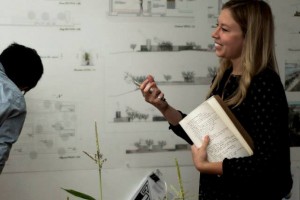Back in May 2017, Treaty Lands, Global Stories presented at the SSAC Layered Histories Conference in a panel called Colonial Entanglements and Decolonizing Strategies. Later, we revised our paper and presented it at a UWSA faculty meeting on July 20. And now we are sharing it with all of you.
Read on to discover all of the following: an introduction to architecture as a tool of colonialism! a literature survey interrogating the Western Canon! a brief comparison of Canadian architecture school curricula! The story of what we’ve been doing so far here at the school! And, at the end, a section where we just ask a whole bunch of questions!
Because, of course, we don’t have the answers. That’s why we need your help, so follow us on Facebook, read our other pieces here on Bridge, get in touch by email, and look out for upcoming events.
You can check out the full paper embedded below, or linked here on issuu.
An excerpt from the introduction, covering architecture as a tool of colonization:
Site is at the crux of our work as architects. We need to be aware of the story of the land, under-foot and under-foundation. Canada, as it exists today, is the direct result of the colonization and settlement of Indigenous lands. For centuries, architecture and planning have been tools for colonization, acting to displace, marginalize, confine, and assimilate Indigenous peoples in order to expand empires and bring European settlers to the so-called “new world.” The parceling of land and the forms of our buildings arrived with colonization. We have inherited this spatial and conceptual framework that has been continually responsible for the marginalization of the ‘other.’
On the implicit settler-colonial framework around architectural practice:
As architects, we operate within this settler-colonial context dominated by a Eurocentric worldview. By failing to acknowledge that settler-colonialism forms an implicit frame around how we practice architecture, we are, whether consciously or not, supporting the hegemony. As architects shaping the built world, we have a social responsibility to address this context. To change the way we build, we must first change the way we learn to build. Architecture schools and their curricula must prepare students to work within and challenge the settler-colonial context.
How can our schools do this? How do we shift our perspectives and disrupt entrenched biases? How do we design an inclusive architectural curriculum? We want to grapple with these questions. We think it is imperative for other Canadian architecture schools to do the same.
Samuel Ganton is a graduate student at the University of Waterloo School of Architecture. His thesis research focuses on designing a thunderstorm observatory on a lake in Venezuela.





Leave a Reply